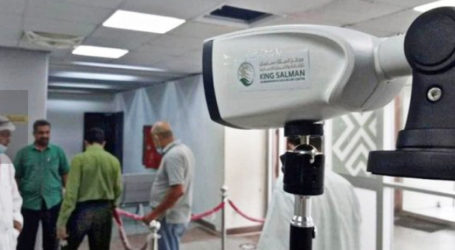OMAN REPORTS FIRST MERS DEATH IN NEARLY A YEAR


Muscat, 21 Rabi’ul Awwal 1435/12 January 2015 (MINA) – Oman reported Thursday its first death of a person from Middle East Respiratory Syndrome coronavirus (MERS-CoV) in nearly a year.
No further details were given in the health ministry statement carried by the official ONA news agency. It is the third MERS fatality in the country.
Oman borders Saudi Arabia, the country hardest hit by MERS, Gulfnews quoted by Mi’raj Islamic News Agency (MINA) as reporting.
MERS is considered a deadlier but less transmissible cousin of the SARS virus that appeared in Asia in 2003 and infected more than 8,000 people, nine percent of whom died.
Like SARS, it appears to cause a lung infection, with patients suffering coughing, breathing difficulties and a temperature. But MERS differs in that it can cause rapid kidney failure.
Research by Saudi scientists indicates that camels play a role in the transmission of the virus to humans.
In November 2013, an Omani man diagnosed with MERS died in Abu Dhabi.
The victim, 75, had been visiting Abu Dhabi in October when he was diagnosed with the virus.
Following his death, the patient’s body was repatriated to Oman.
As reported by Gulf News, another Omani patient, who represents the first known case of the virus diagnosed in Oman, also died in the country’s northwest region in November. He was 68 years old, and had been running a persistent fever before being diagnosed.
The vast majority of human cases have been in Saudi Arabia, but isolated Mers cases have been reported across Europe and in Asia and the United States in people linked who have recently travelled in the Middle East.
Scientists are not sure of the origin of the virus, but several studies have linked it to camels and some experts think it is being passed to humans through close physical contact or through the consumption of camel meat or camel milk.
However, a study last year, published in the online journal of the American Society for Microbiology mBio, scientists said the detection of the virus in air samples was concerning and needed to be followed up.
“The clear message here is that detection of airborne Mers-CoV molecules, which were 100 percent identical with the viral genomic sequence detected from a camel actively shedding the virus in the same barn on the same day, warrants further investigations and measures to prevent possible airborne transmission of this deadly virus,” said Esam Azhar, an associate professor of medical virology at King Abdul Aziz University in Jeddah who led the study.
Viruses that spread through air – such as flu viruses for example – are far more likely to spread swiftly and widely in human populations than those that can only move from an animal to a person, or from person to person, via direct contact.
For their research, Azhar’s team collected three air samples on three consecutive days from a camel barn near Jeddah owned by a 43-year-old male Mers patient who later died from the disease.
Four of the man’s nine camels had shown signs of nasal discharge the week before the patient became ill, and he had applied a topical medicine in the nose of one of the sick camels a week before experiencing symptoms.
Using a laboratory technique called reverse transcription polymerase chain reaction (RT-PCR) to detect levels of particular genes, the scientists found that the first air sample, collected on November 7, 2013, contained genetic fragments of the Mers virus.
The World Health Organisation and the Saudi Health Ministry have advised camel farm and slaughterhouse workers to take precautions against Mers by ensuring good hygiene, including frequent hand washing after touching animals, facial protection where feasible, and wearing of protective clothing.(T/P009/P3)
Mi’raj Islamic News Agency (MINA)






